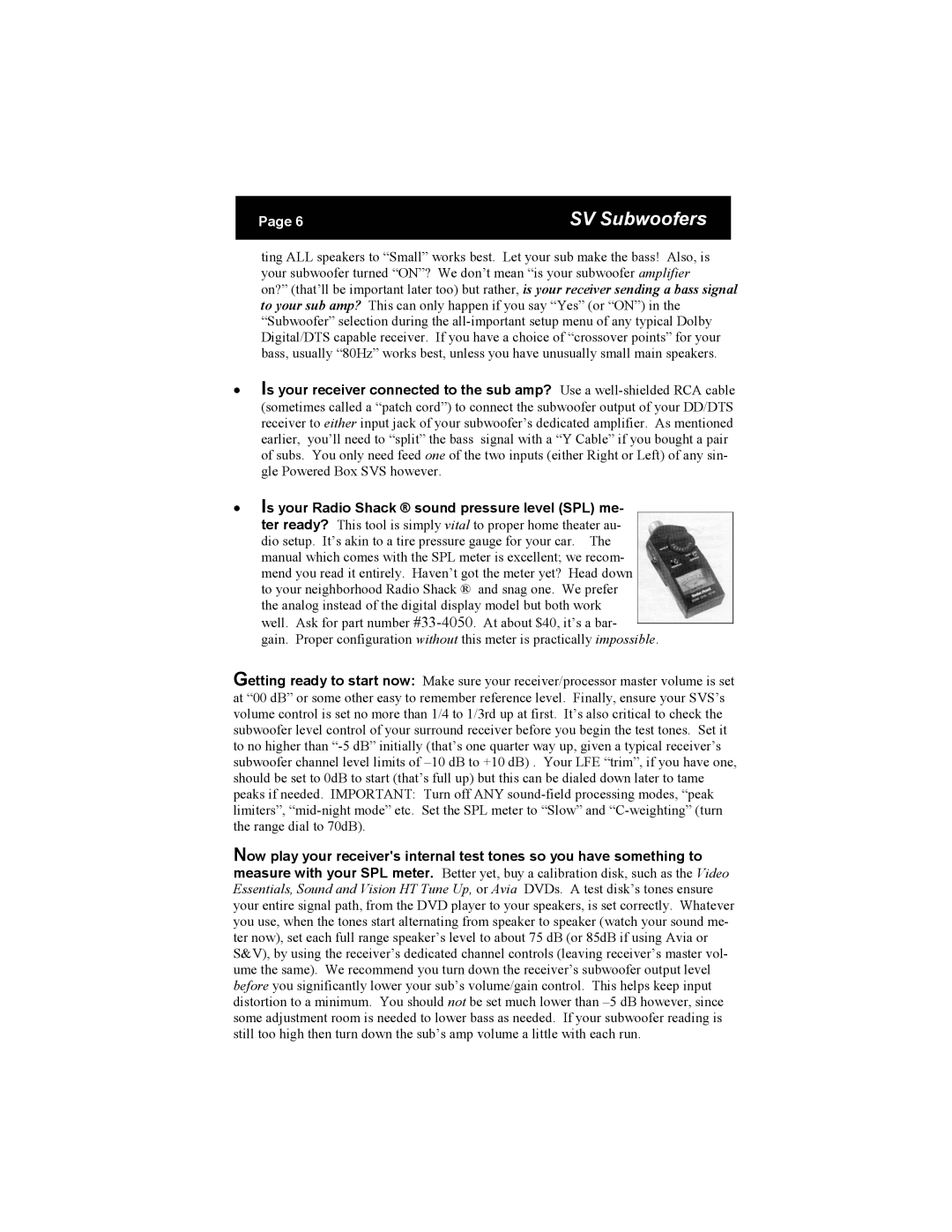SVS PB2-Ultra specifications
The SV Sound SVS PB2-Ultra subwoofer is a powerhouse in the world of home audio, renowned for its exceptional performance and advanced engineering. Designed to deliver deep, impactful bass, it caters to audiophiles and home theater enthusiasts alike, establishing itself as a reference point in the realm of subwoofers.At the heart of the PB2-Ultra is its formidable 12-inch driver, which utilizes a massive motor structure and a long-throw voice coil. This combination allows for impressive excursion capabilities, producing bass frequencies with remarkable clarity and authority. The driver is housed within a robust, ported enclosure that enhances its performance by maximizing the efficiency of airflow, resulting in deeper bass response.
One of the standout features of the SVS PB2-Ultra is its advanced dual driver design. With two active 12-inch drivers working in concert, the subwoofer is able to create an expansive soundstage and rich, immersive sound. The dual-driver configuration also helps to minimize distortion, enabling the subwoofer to reproduce intense low frequencies without losing detail.
Powering this impressive setup is a high-performance built-in amplifier that boasts a staggering output of 1200 watts RMS and 4000 watts peak. This substantial power reserve allows the PB2-Ultra to easily handle dynamic peaks, delivering a thunderous yet clean bass response, whether it's in the middle of a movie's action scene or during a music playback. The amplifier includes advanced software features for added flexibility, allowing users to fine-tune the subwoofer's performance to suit their listening environment.
Moreover, the PB2-Ultra is equipped with sophisticated tuning options. The subwoofer features adjustable phase control, variable low-pass filtering, and volume control, giving users the ability to achieve seamless integration with their main speakers. Additionally, the innovative SVS app allows for easy remote access to these settings, making it simple to adapt the subwoofer's performance on the fly.
Durability is another key characteristic of the PB2-Ultra. Constructed with high-quality materials and finishes, it not only looks elegant but is built to last. The stylish design allows it to fit seamlessly into various room decors, making it as visually appealing as it is functionally exceptional.
In summary, the SV Sound SVS PB2-Ultra is a high-quality subwoofer that combines advanced technology, powerful performance, and user-friendly features. Whether for a cinematic experience or music enjoyment, it stands at the forefront of subwoofer innovation, ensuring that listeners experience their audio in its fullest form.

